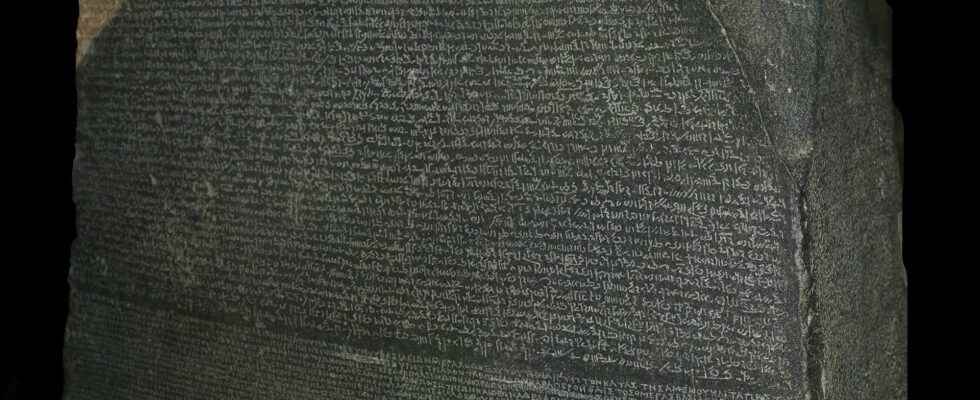The Rosetta Stone was discovered on July 15, 1799 by the French army during Napoleon’s Egyptian campaign. This expedition had embarked many scientists to discover the beauties of this country. The text was only translated in 1822 by Jean-François Champollion.
You will also be interested
The stone of Rosette is a fragment of a stele on which are engraved three different scripts of the same text and in two languages. This text underwent several translation attempts before Champollion unable to decipher the hieroglyphs and to fully translate the inscriptions. This is a decree dating from 197-196 BC, commemorating the accession to the throne of Pharaoh Ptolemy V, thanking him for the many gifts he made to the temples during his reign. It is also a question of reducing taxes, of releasing prisoners.
Translation of the Rosetta Stone
” I hold the case!exclaimed Champollion before collapsing. He found the code to translate the text by imagining an Egyptian alphabet from the names of egyptian rulers. Based on this technique, he succeeded in translating the hieroglyphs of the Rosetta Stone. He announced his discovery to the scientific world in 1822 in a letter addressed to the deputy, Baron Bon-Joseph Dacier, among other distinctions, historian, Hellenist translator, learned linguist. Champolion left for theEgypt in 1828 to translate Egyptian monuments with his method. The results of this trip will be published, after the death of Champollion, in the book ” Monuments of Egypt and Nubia“.
To know
Although the Rosetta stone was discovered by the French and translated by Champollion, the stele is the property of the British Museumin London, who lent it to the Louvre Museumin Paris, in the 1980s.
Interested in what you just read?
